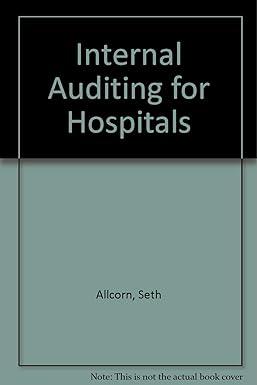6.BMX Co. sells product for $1,000 per unit, and has a cost of goods sold percentage of 80%. The gross profit to be found for selling 20 units: A.is $20,000. B.is $16,000. C.is $ 4,000. D.cannot be calculated with a cost of goods sold percentage greater than 50%. 7.The inventory cost method based on the particular cost of certain units of inventory is the: A.FIFO B.LIFO C.specific-unit-cost method. D.average method. 8.Deciding on which inventory method a company should use affects: A.the profits to be reported. B.the income taxes to be paid. C.the values of ratios reported from the balance sheet. D.all of the above 9. The use of the FIFO method generally increases taxable income: A.when prices are constant. B.when prices are declining. C.when prices are increasing. D.under all circumstances 10. The purchasing manager for East Coast Hoggs is attempting to determine how much inventory to purchase for the upcoming month. The following information has been collected: Current inventory $ 32,000 Budgeted cost of goods sold $80,000 The manager wishes to end the month with ending inventory of $25,000. How much inventory must the company purchase? A.$85,000 B.$82,000 C.$73,000 D.$67,000 11.Purchase returns and allowances and purchase discounts reduce the cost of inventory. A.right B.wrong 12. The largest expense on the income statement for most merchandising companies is: A.administrative expenses. B.selling expenses. C.cost of goods sold. D.other expenses price of the inventory, while cost of goods sold is 13.Sales revenue is based on the based on the of the inventory. A.cost, sales B.cost, cost C.sales, sales D.sales, cost rod un to call for A.cost, sales B.cost, cost C.sales, sales D.sales, cost 14.A company purchased inventory for $800 per unit. The inventory was marked up to sell for $1,000 per unit. The entries to record the sale for cash and the cost of a unit of inventory would include debits to which of the following accounts? A. Sales, $1,000; Inventory, $800 B.Cash, $1,000; Cost of Goods Sold, $800 C.Cash, $800; Cost of Goods Sold, $1,000 D.Sales, $800; Inventory, $800 15.Pat and Company's ending inventory (at cost) was $87,500. The company would be able to sell the inventory at $100,000, net of cost of sale. Before consideration of the lower-of-cost-or-NRV rule, the company's cost of goods sold was $60,000. Which of the following statements reflect the correct application of the lower-of-cost-or-NRV rule? A. The Ending Inventory balance will be $100,000, and Cost of Goods Sold will be $72,500. B.The Ending Inventory balance will be $87,500, and Cost of Goods Sold will be $60,000. C.The Ending Inventory balance will be $87,500, and Cost of Goods Sold will be $72,500. D. The Ending Inventory balance will be $100,000, and Cost of Goods Sold will be $72,500










